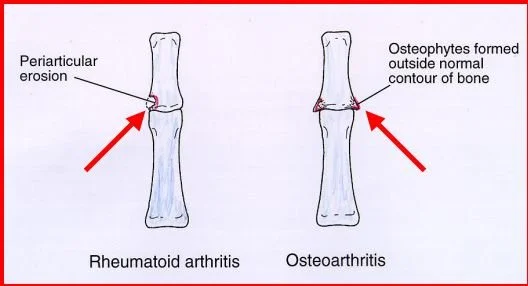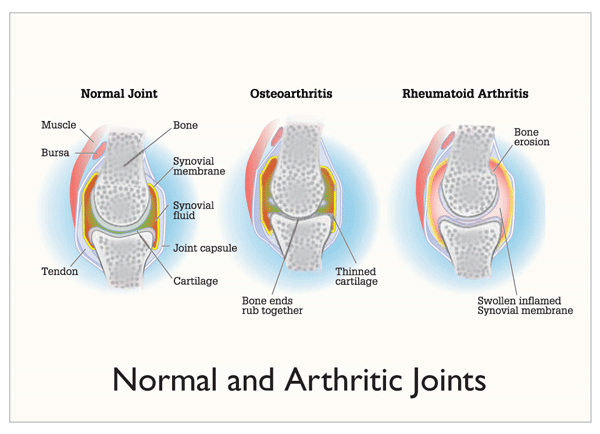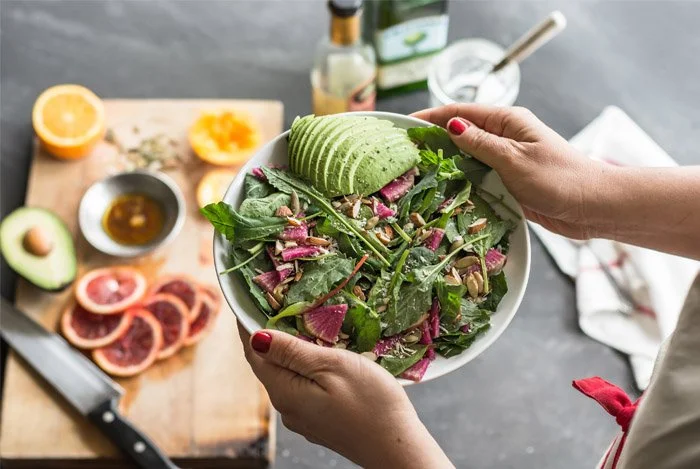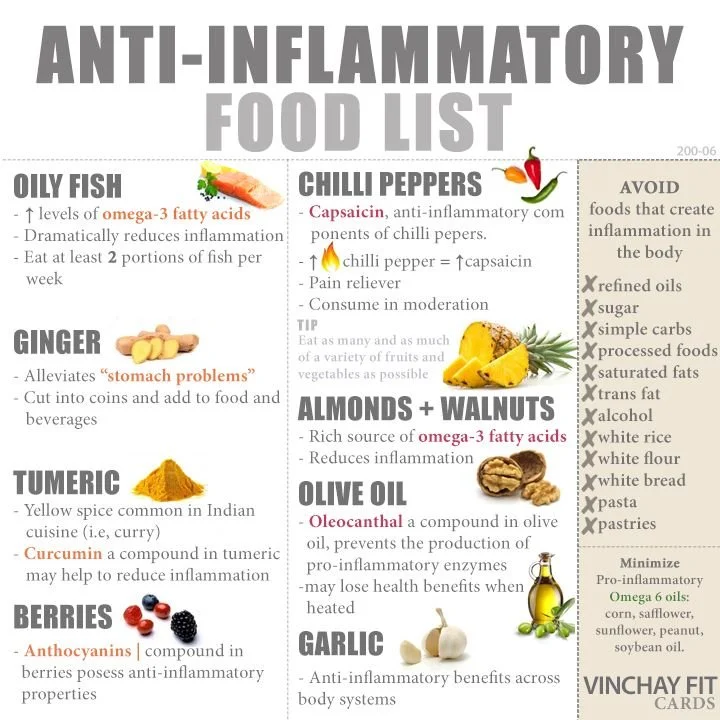Let's Talk More About RA
Why is Rheumatoid Arthritis so bad?
Rheumatoid Arthritis is particularly unfortunate because it's an autoimmune inflammatory arthritis. That means that the immune system, (the body's natural defense system against infection and sickness), goes haywire and starts attacking joints in your body. Typically, RA likes to attack small joints in the hands, wrists, ankles, and feet, but it will also go after the knee and can in some instances be seen in the hips as well. RA prefers small joints though, so those locations are uncommon.
As you can see in the x-ray above, RA has the potential to severely damage joints to the point that they become deformed. My mom, who has osteoarthritis in her hands, describes my aunt's RA as the "crippling" kind of arthritis due to possible deformation that can occur with this disease.
What do these things really look like though?
RA on the left eats away and destroys bone at the beginning. OA on the right builds extra bone and eventually fuses the joint.
The image directly above is a really good basic picture of what is happening with RA and OA. RA erodes or eats away at the bone surrounding the joint. The joint capsule, or the area of cartilage and lubricating fluid around the bones that allow them to move freely and easily, is the first target. That area becomes inflamed, and the body attempts to deal with it as best it can by removing bone to make room for the swelling and inflammation. This is unfortunate, of course, because we would much rather have less inflammation than less bone, but for whatever reason, the immune system cannot comply in this case.
This is another great image to show the difference between both normal, OA and RA joints.
This image shows the joint capsules really well. Remember a joint capsule is the synovial fluid, or lubricant, inside the cartilage that holds the joint together. This area becomes inflamed and swells. The body deals with it by eroding bits of bone which you can see in the right joint example.
What can I do about it?
First and foremost, let's remind ourselves about how this disease works. It is only active when there is inflammation in the joint. Therefore, if you can eliminate the inflammation, you can potentially put the progression of the disease on hold. It is unlikely that you will be able to recover bone loss that has already occurred, but it is certainly possible to keep the bone loss from getting worse.
Okay, so how do I get rid of inflammation?
Exercise and diet! You may not believe it, but if you remember reading about my Secret to Wellness posts from a few weeks ago, these two things are critical.
Swimming is a fantastic whole body workout that boosts your cardiovascular endurance and is also low impact!
For your exercise, you're going to want to do light strength training and low-impact cardiovascular workouts. If you are already used to working out and exercising at a higher level when you receive a diagnosis of RA, my recommendation would be that you continue with whatever is comfortable to you without causing too much pain. If you have access to a pool, swimming is one of the all-around best exercises you can do for your body. It is a fantastic strengthening exercise, and it's low impact. Another great strengthening exercise is yoga. It doesn't require any fancy equipment, and it is done almost entirely using your own body weight as resistance.
Yum! Fresh spinach, beets, radishes, avocado, blood and regular oranges! This is an anti-inflammatory powerhouse.
For your diet, you are going to want to start eating whole, healthy, unprocessed foods! You want to start eliminating heavily processed foods, any processed sugar, gluten, dairy, and soy. That means out with the fast food, the sugary snacks, soda, breads, bagels, cakes, pastas and all of the other things that you probably love. However, the really exciting news is that there are healthier versions of almost all of these things. They may not taste the exact same, but they're pretty darn good. Once you cut the things out for a little while, you won't even miss them!
What about medication?
Well, there are certainly a lot of different pharmaceutical options available. The most common prescription will be an NSAID (or non-steroidal anti-inflammatory drug) like aspirin or ibuprofen. However, the list goes on and includes corticosteroids, DMARDs (disease-modifying anti-rheumatic drugs), Biologics and JAKs Inhibitors which are both distinct subsets of DMARDs.
Are there specific foods I can or should eat to help?
You can read a lot about anti-inflammatory diets online. In fact, there are probably more resources than you'll know what to do with. For starters, I'm going to leave you with these two infographics about how to choose anti-inflammatory foods.
I like this one because it lists the names of some of the natural chemicals in these foods that give them their health benefits!
This one is easier to understand, but it has a little less information. Use whichever works best for you!
Yours in Health,
Dr. William








